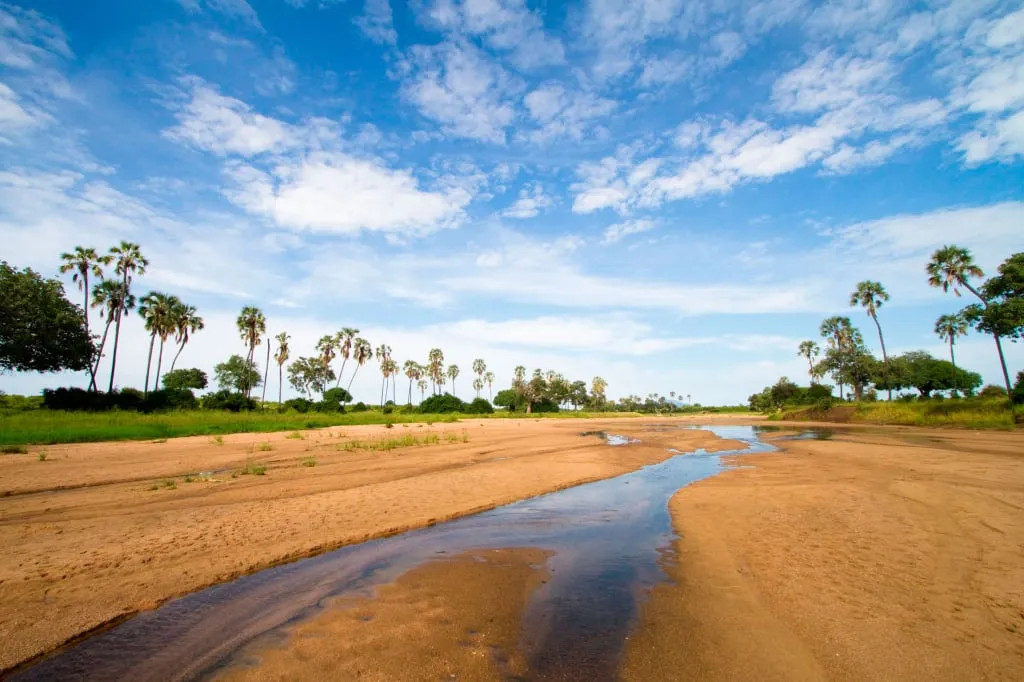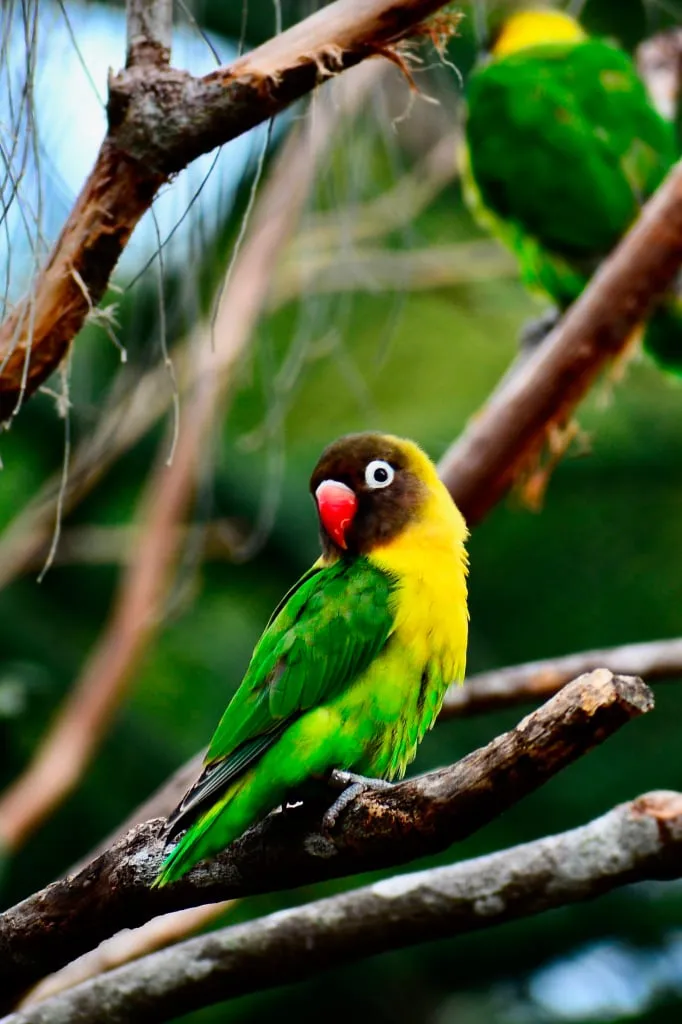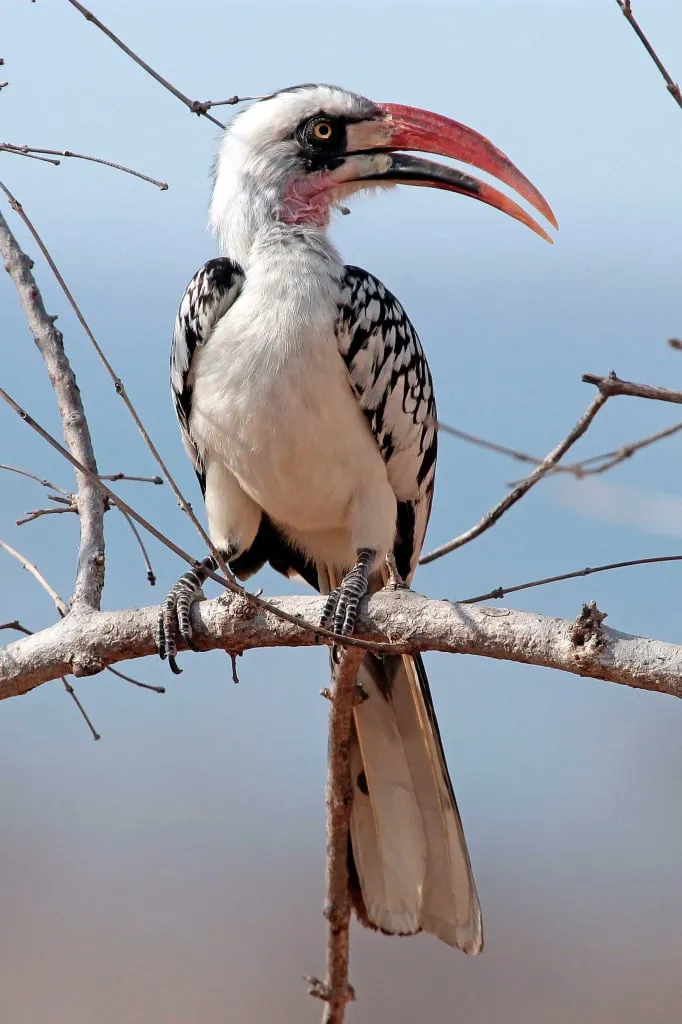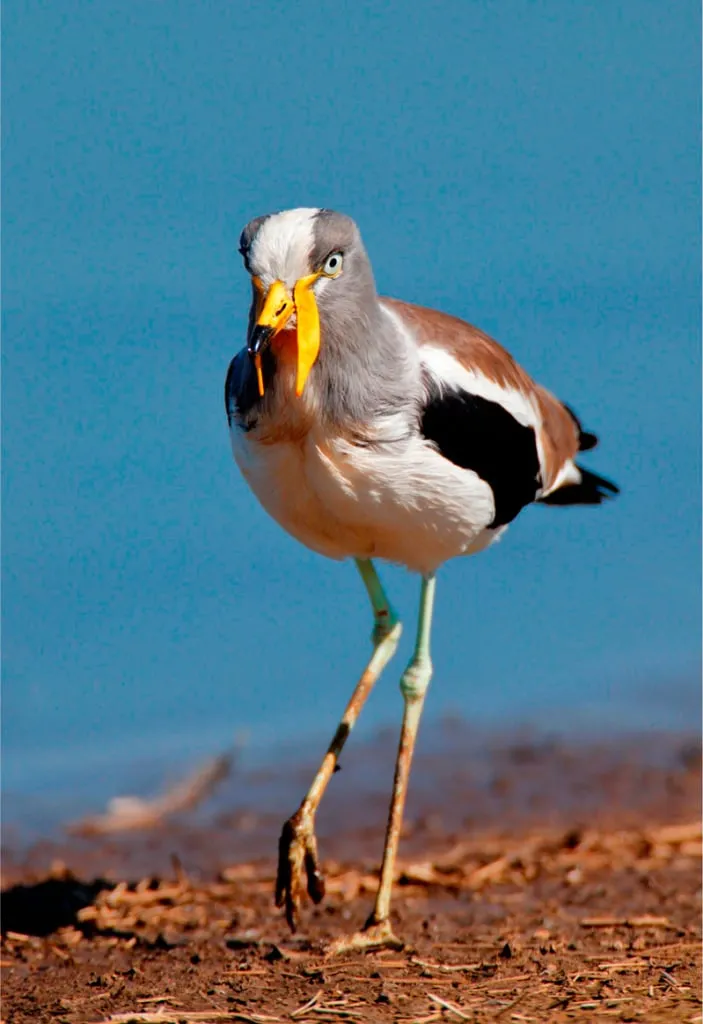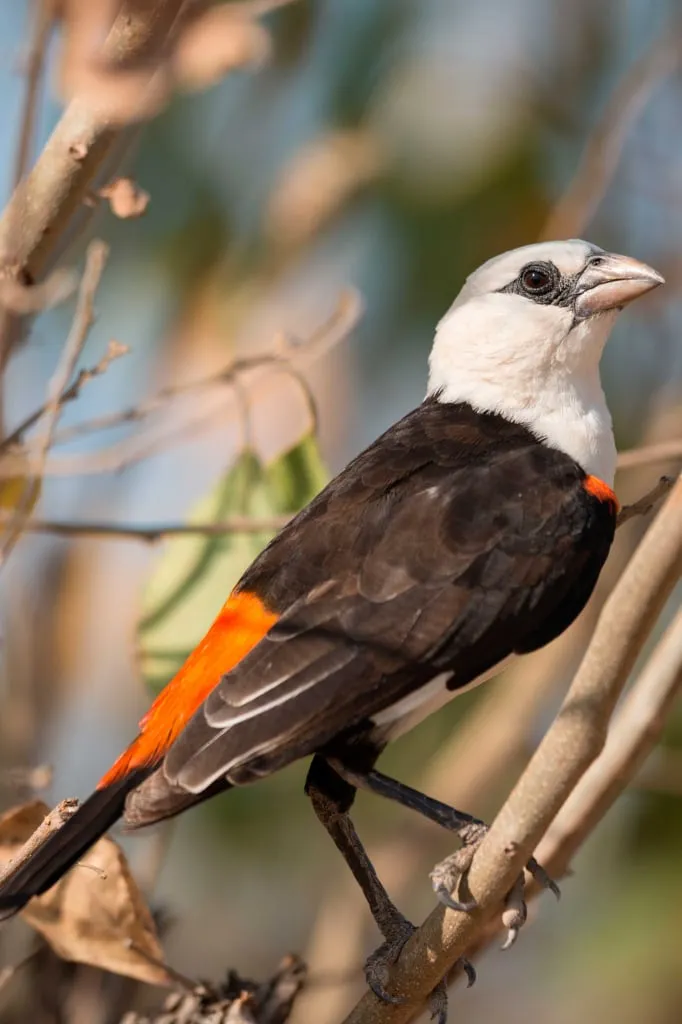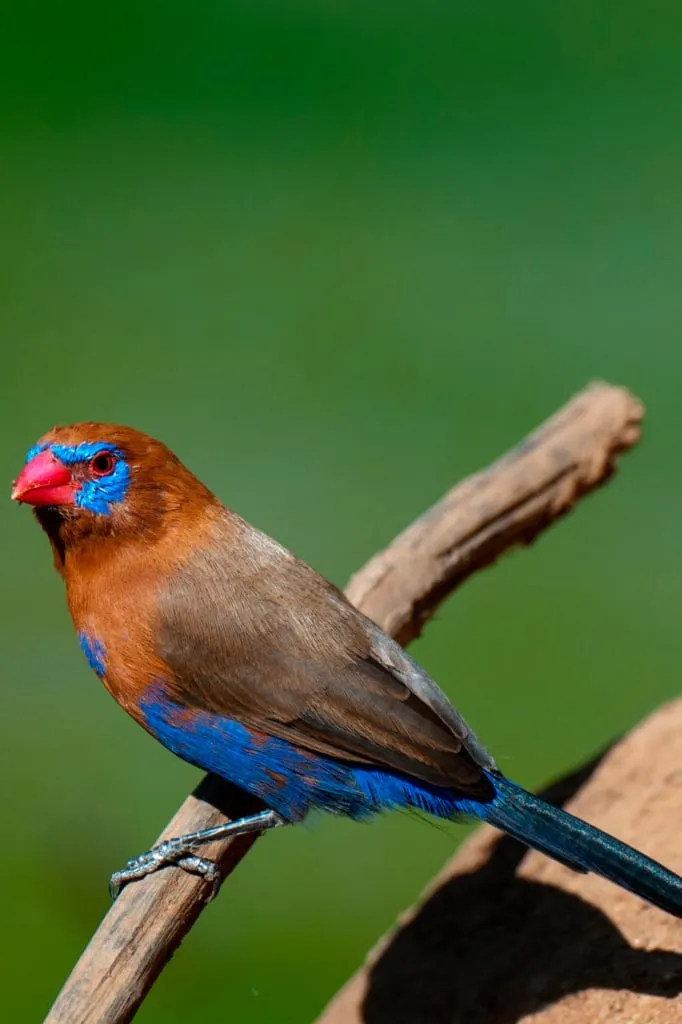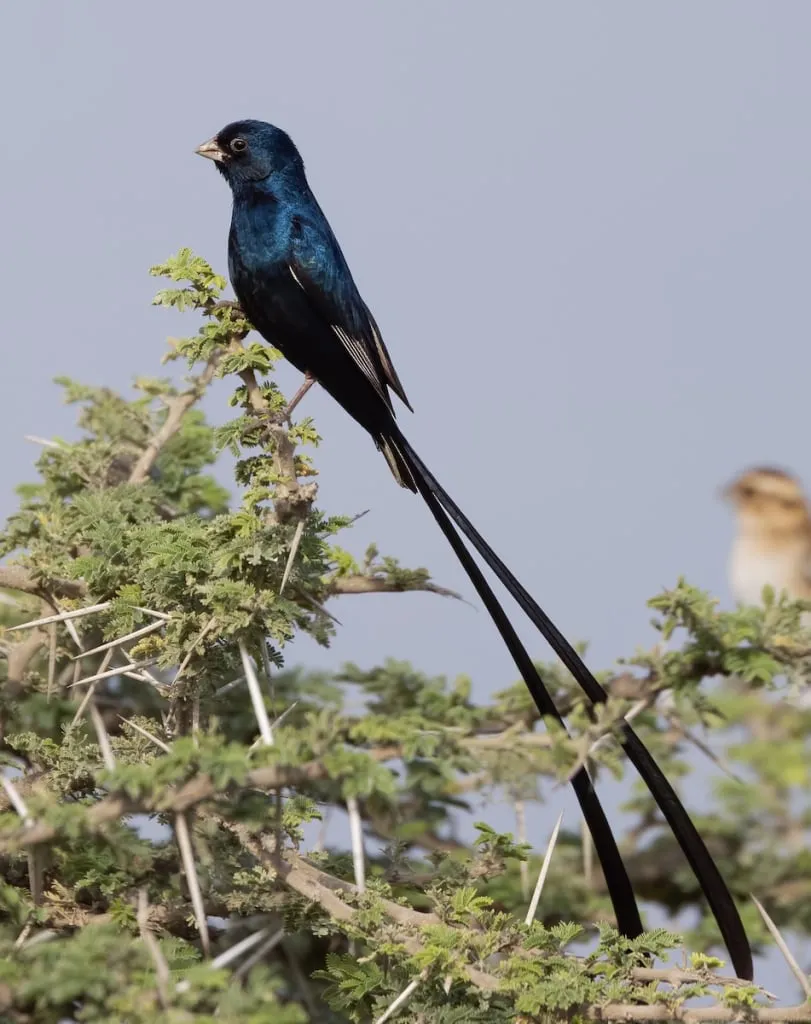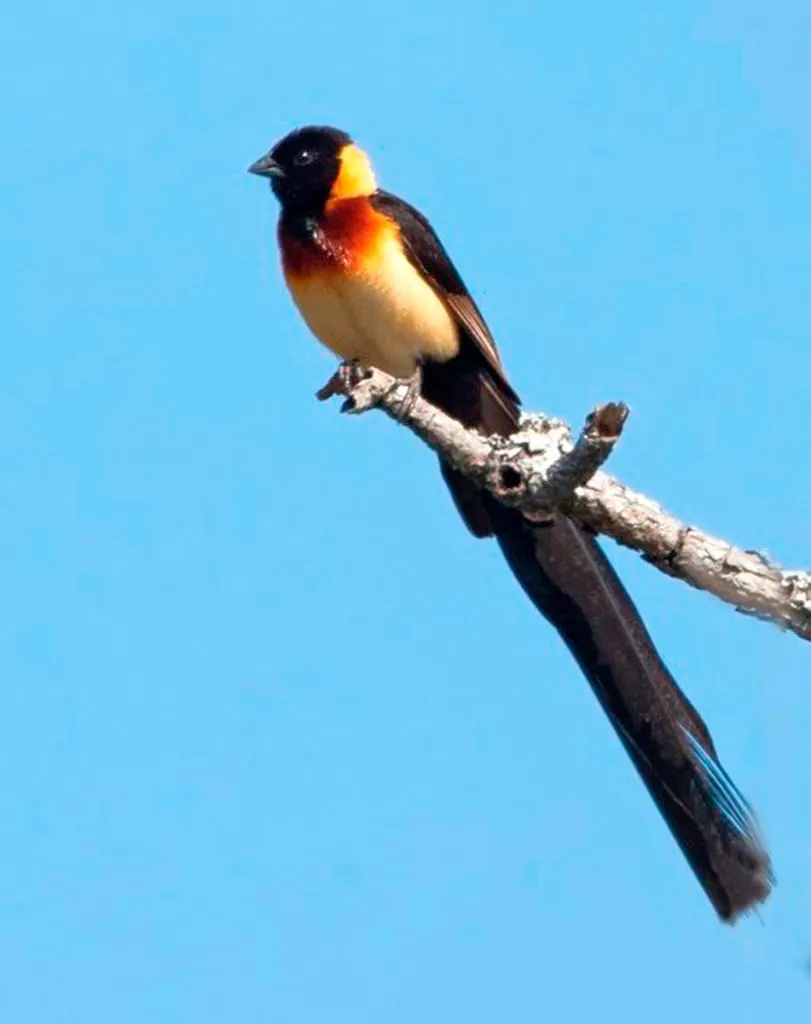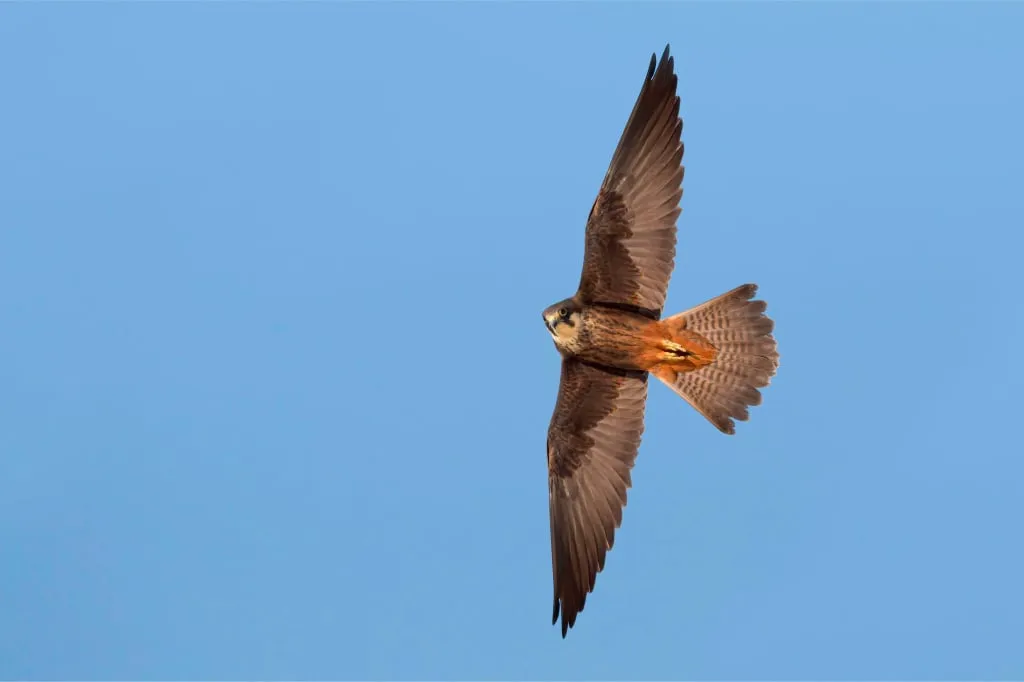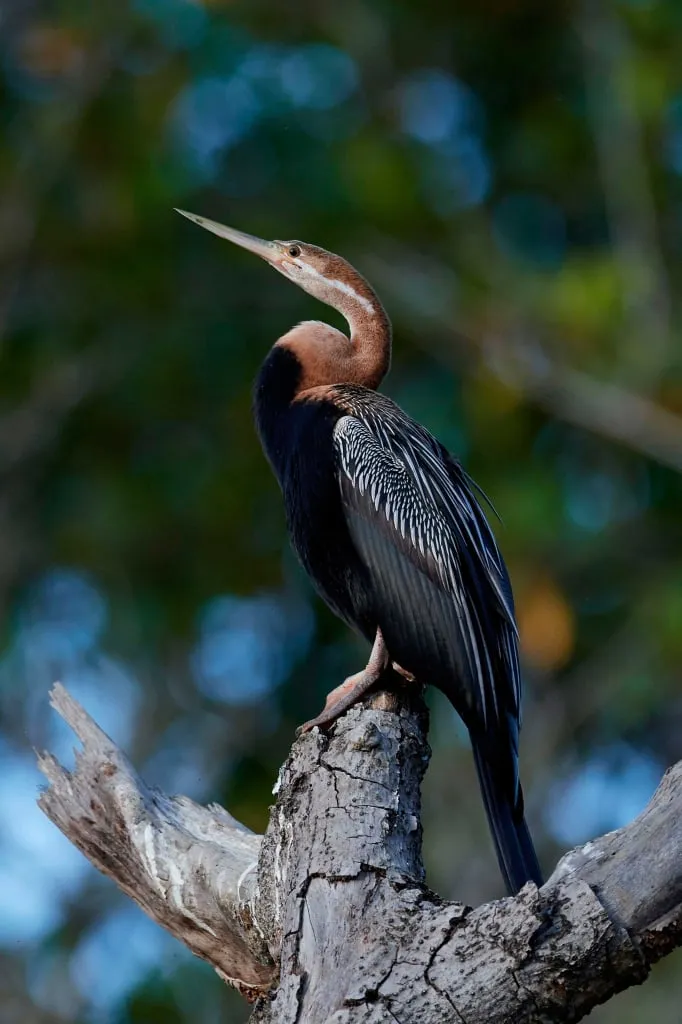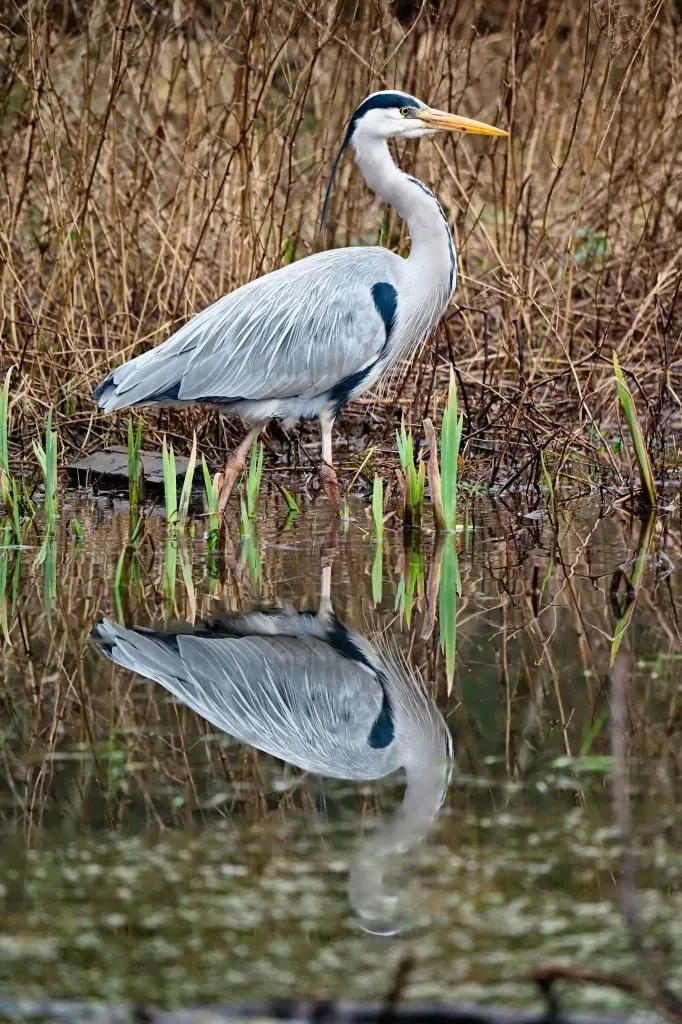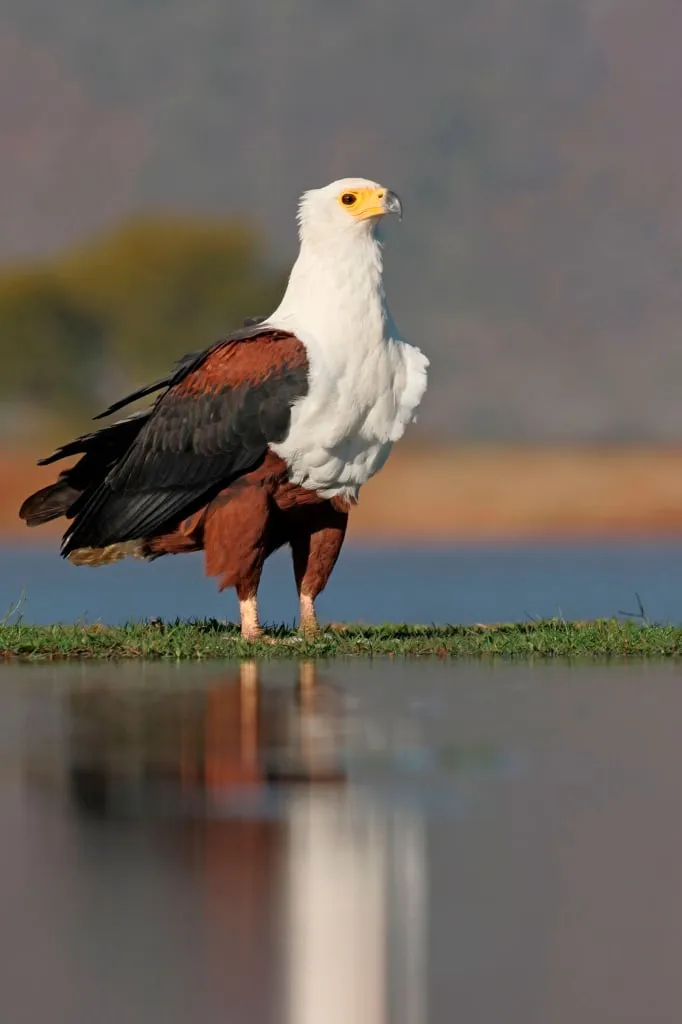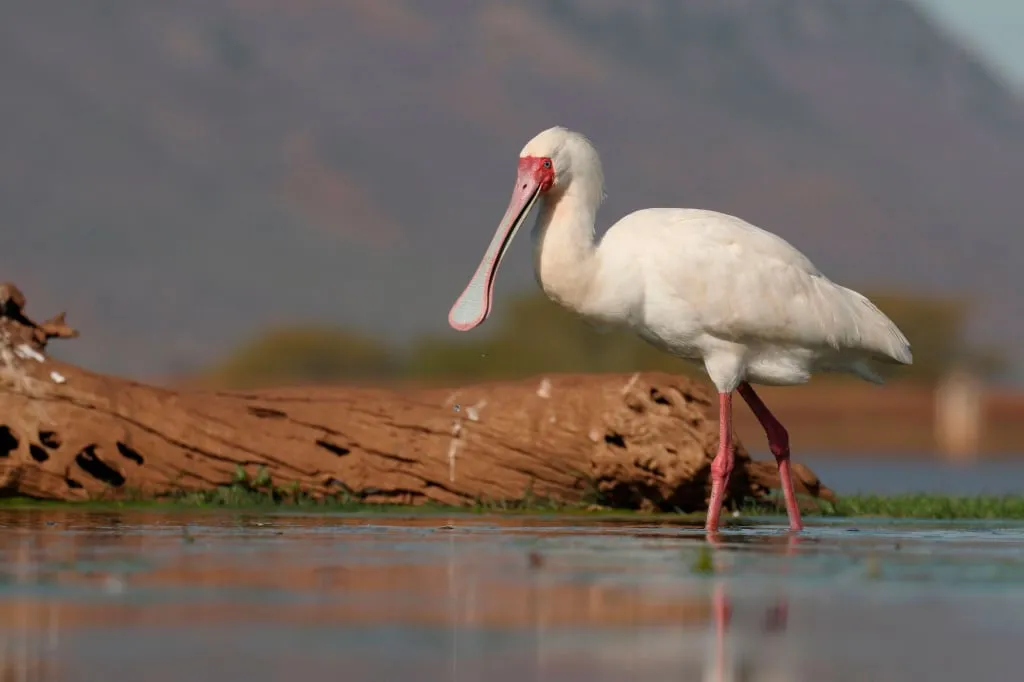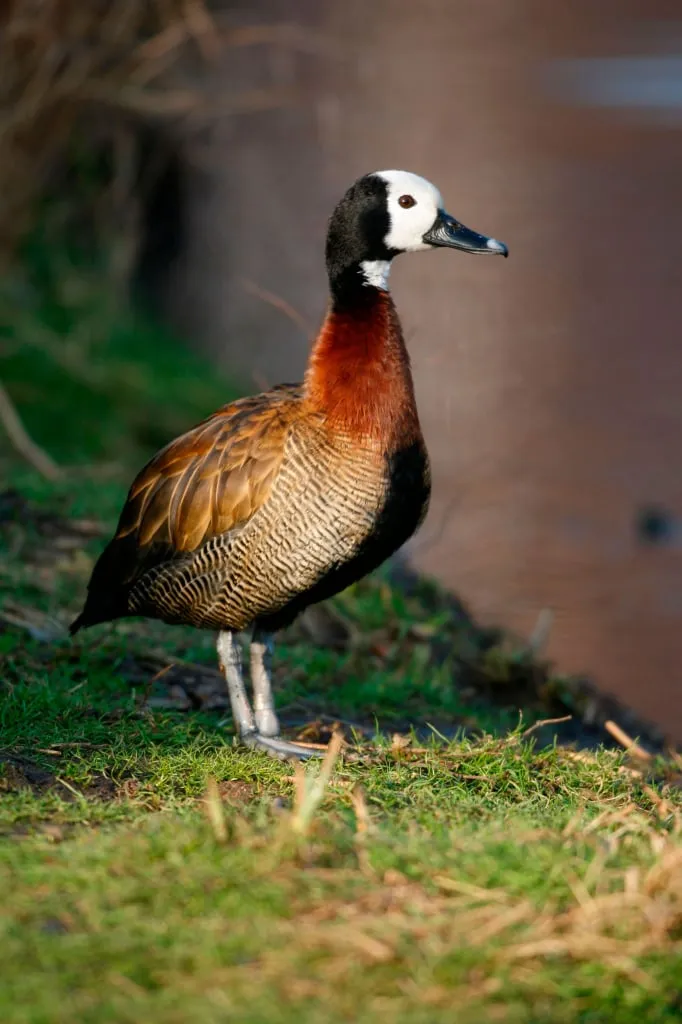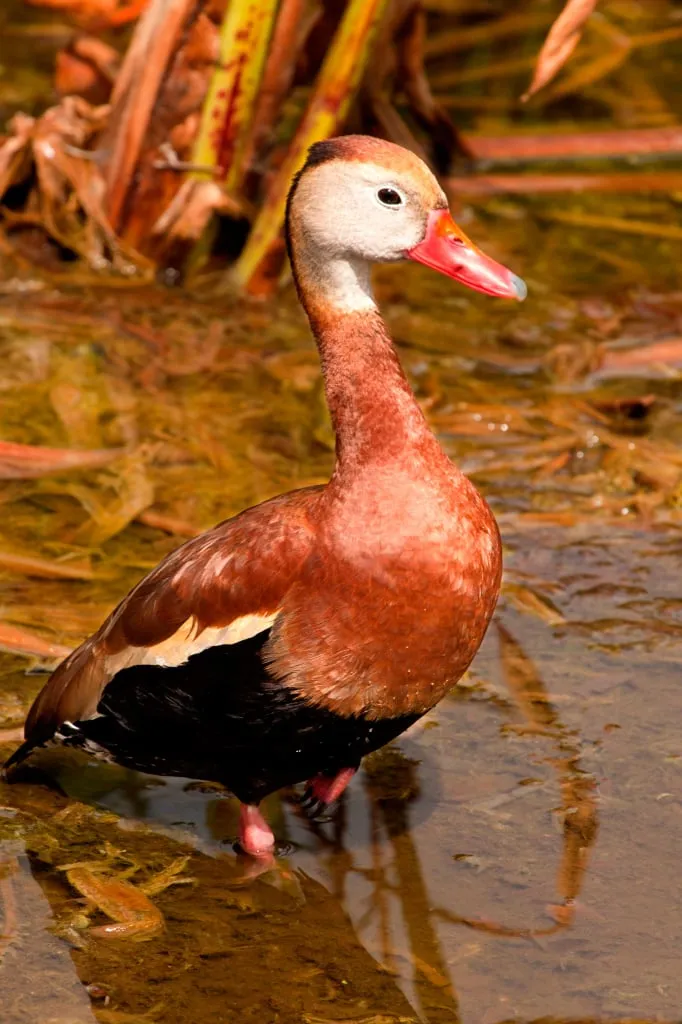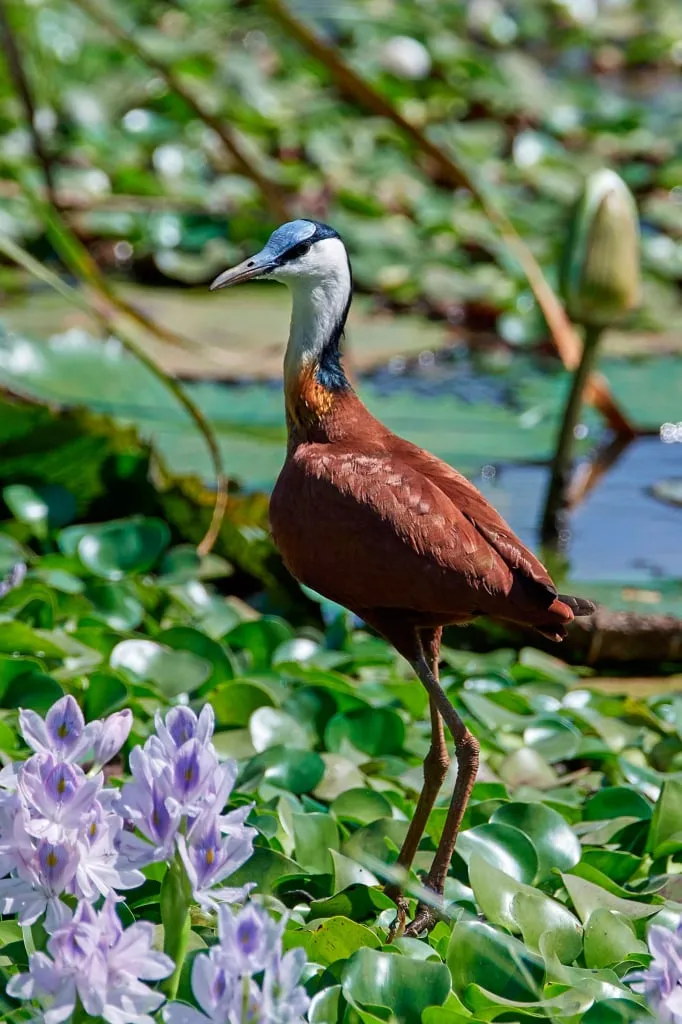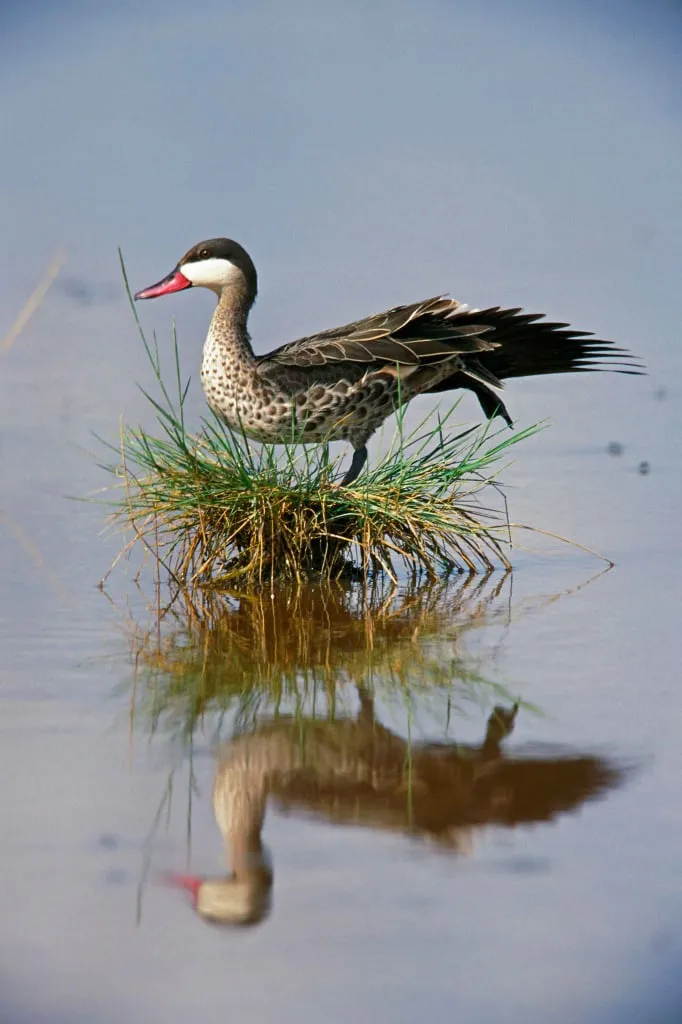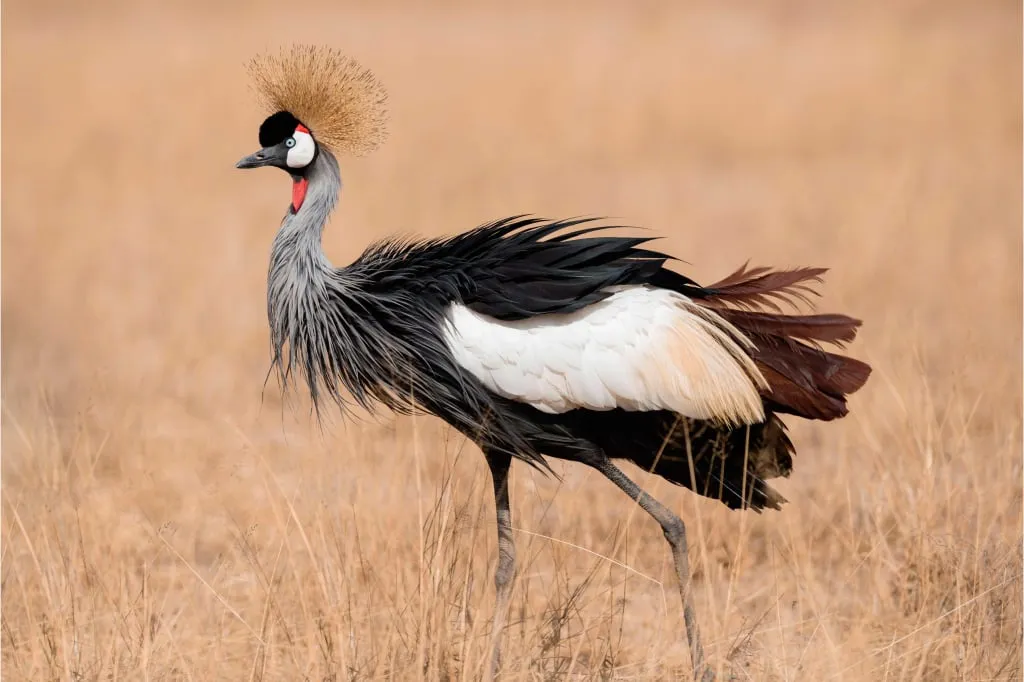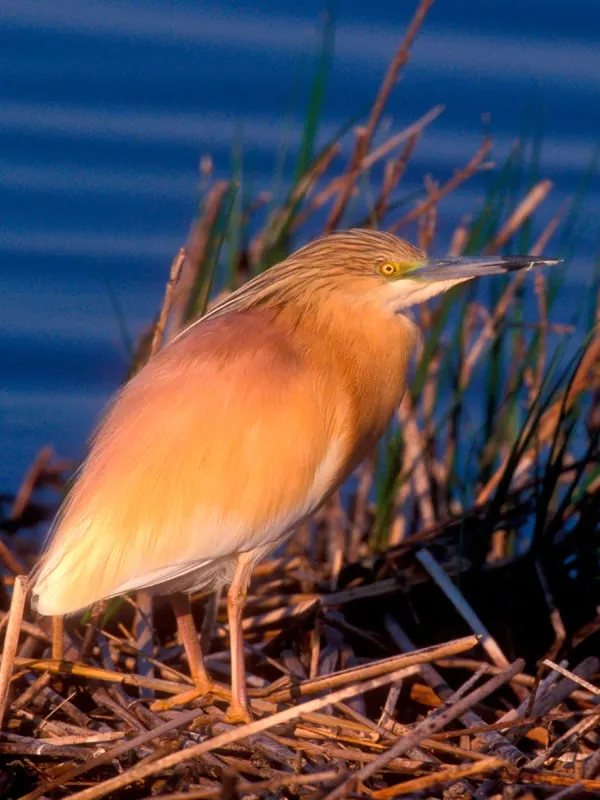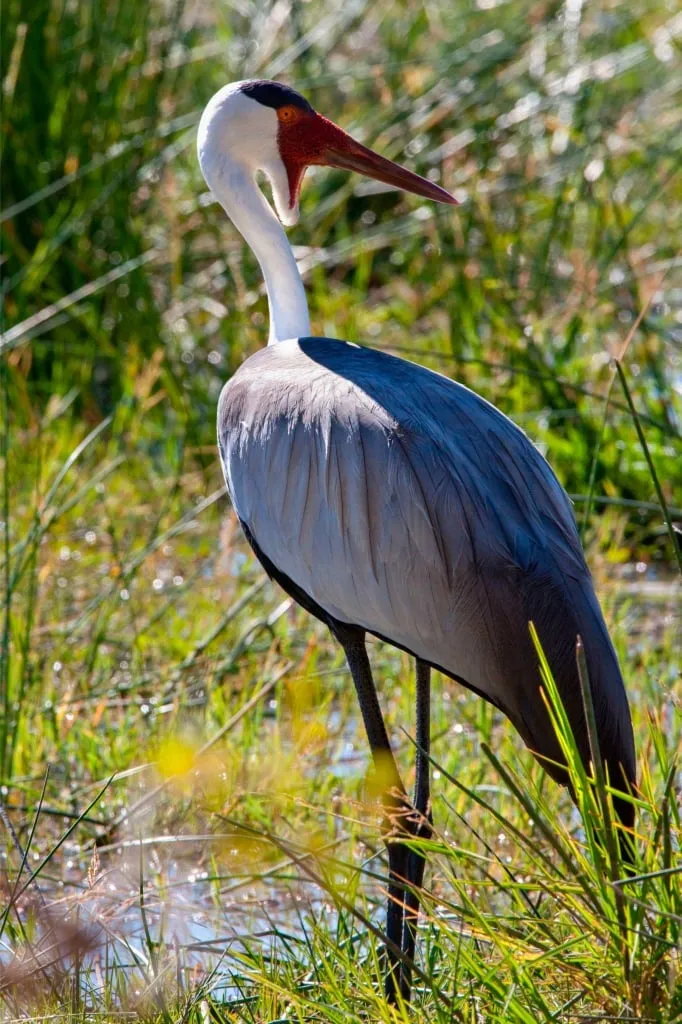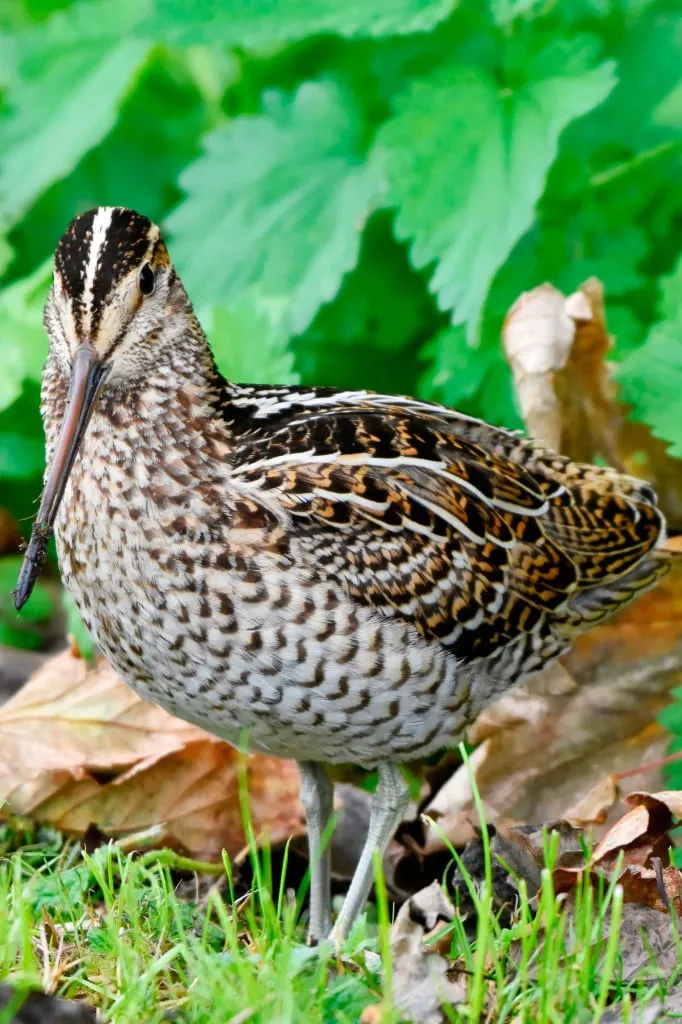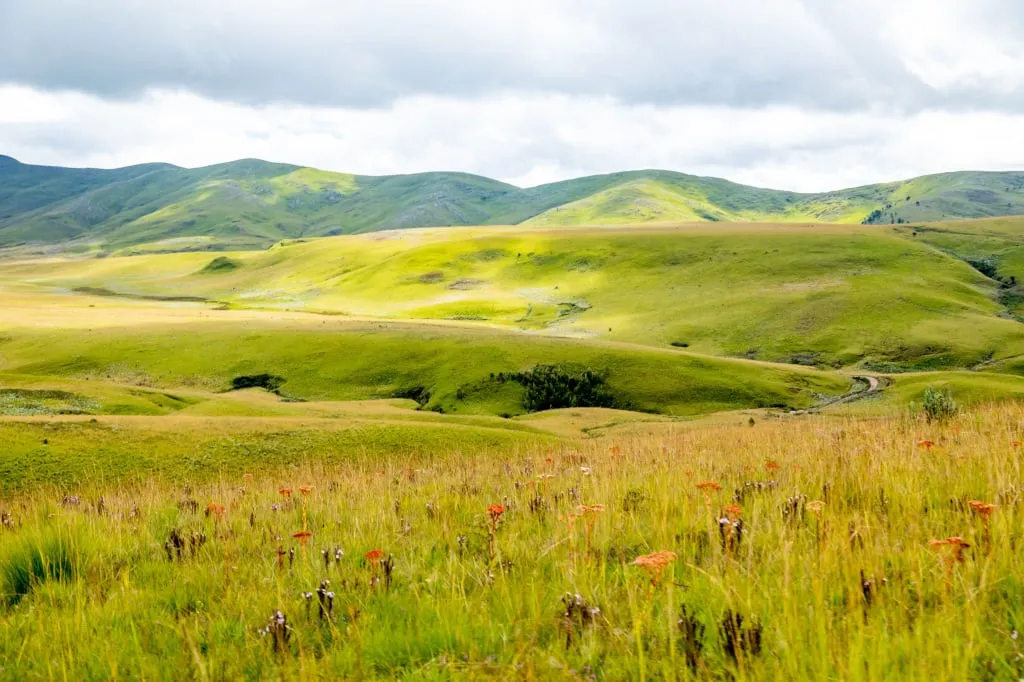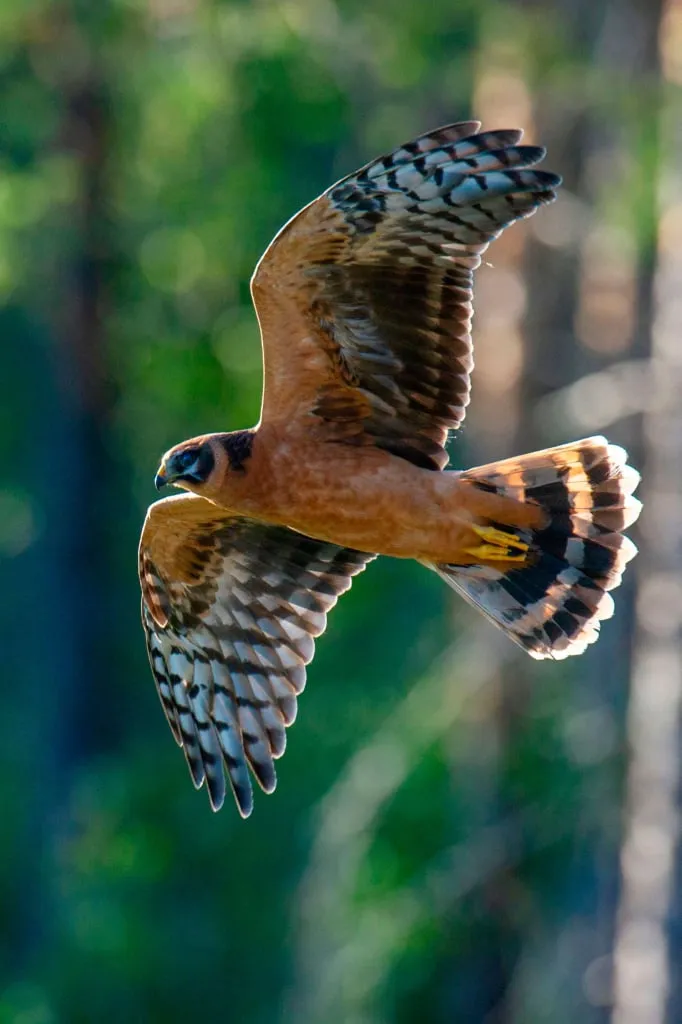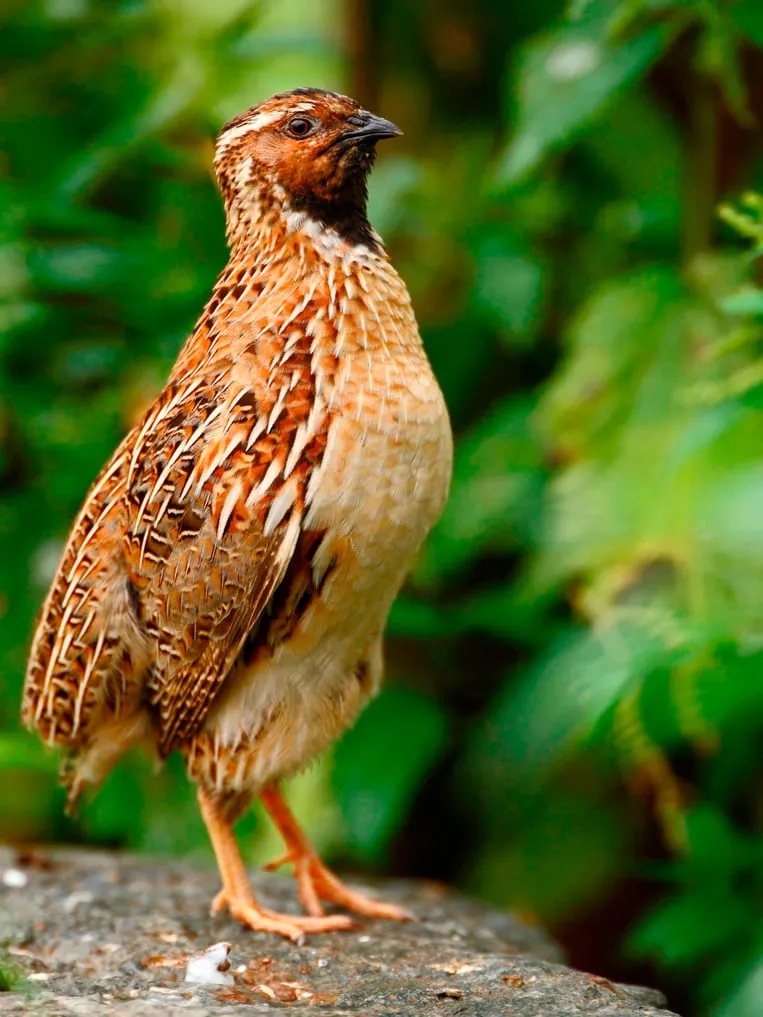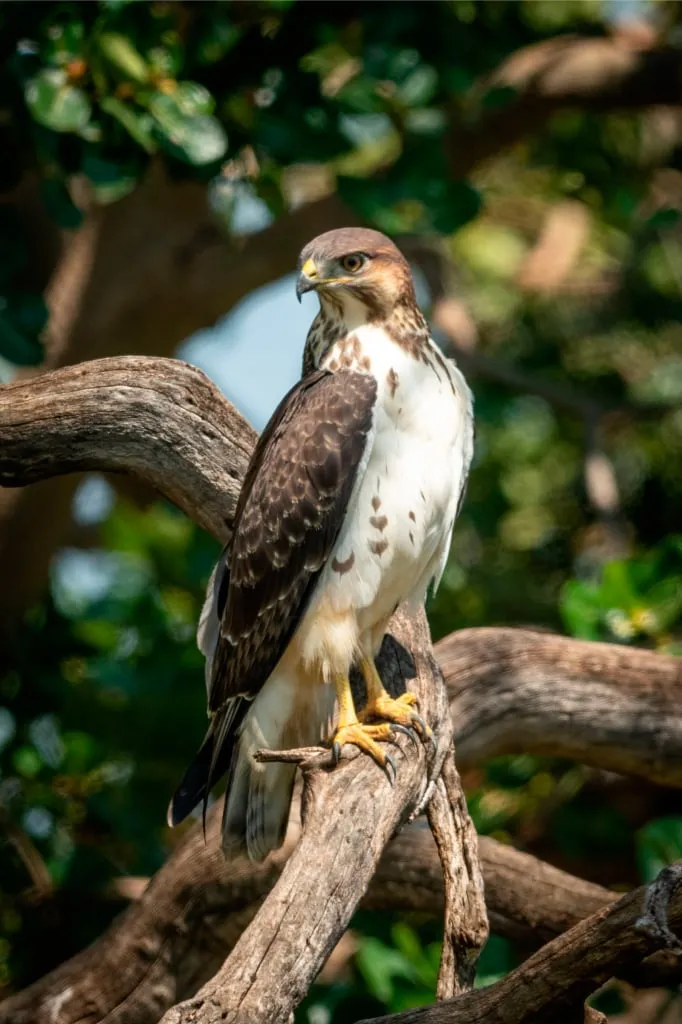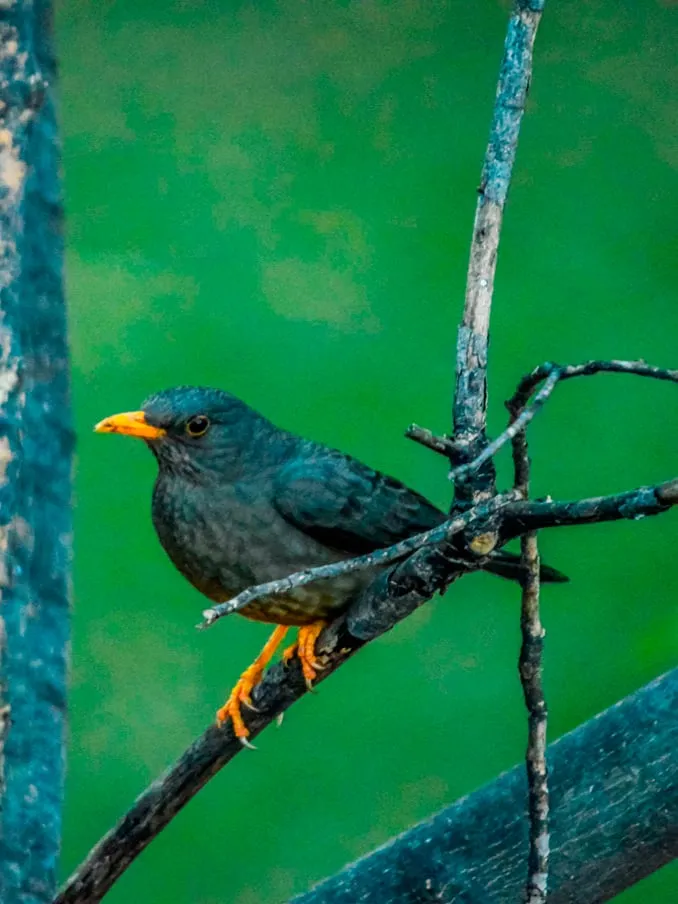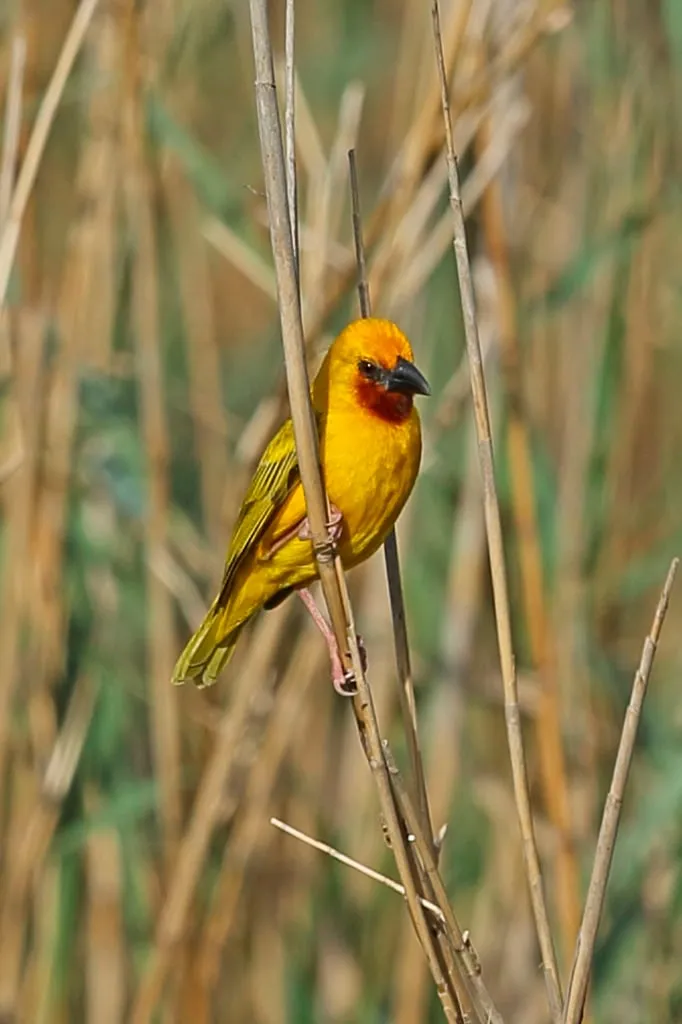The North of Tanzania is a renowned destination for birdwatchers worldwide. Previously, we discussed the diverse bird species found in Serengeti and Ngorongoro, Lake Manyara and Tarangire National Parks, as well as the amazing avifauna of Arusha and Kilimanjaro National Parks near the city of Arusha. In this article, we will focus on the captivating southern locations that attract both professional ornithologists and enthusiastic birders that go on Tanzania birding trips.
Southern Tanzania is characterized by expansive arid plains and river floodplains, along with several dormant volcanoes and relatively low mountain ranges that descend towards Lake Nyasa, also known as Lake Malawi. Interestingly, these areas are in close proximity to one of the country's driest regions and to the location with the highest amount of rainfall in Tanzania. The first place is the vast surroundings of the Great Ruaha River, and the second one is the southeastern slopes of the mountain range surrounding Mount Rungwe. Additionally, there is a large water reservoir here that attracts numerous waterfowl. These locations offer intriguing opportunities for exploration, with hundreds of bird species to discover on a birding tour to Tanzania.
Ruaha National Park
Ruaha National Park is the second-largest national park in Tanzania, following Nyerere National Park. It encompasses a vast arid expanse located in the southernmost part of the Maasai steppe. Situated on the western bank of the Great Ruaha River, which seldom runs dry despite receiving minimal rainfall, Ruaha National Park is considered one of the country's driest protected areas. The park consists of plains with forested areas to the south and west.
The NP is home to approximately 400 to 500 bird species. However, an exact count is challenging as the main tourist-accessible areas have been extensively studied, while vast regions away from lodges and guest camps remain relatively unexplored. Ruaha National Park has the potential to be an incredibly interesting location for birding.
Ruaha is host to populations of Tanzanian endemics such as the Ashy Starling (Lamprotornis unicolor) and Yellow-collared Lovebird (Agapornis personatus). Additionally, other Tanzanian endemics you can see in Ruaha include the Tanzanian Red-billed Hornbill (Tockus ruahae) and Tanzanian Masked Weaver (Ploceus reichardi).
There is evidence, however, that the Tanzanian Masked Weaver also appears in Zambia and the Ashy Starling appears in Kenya. There is also controversy about the Tanzanian Red-billed Hornbill, whose scientific name alludes to Ruaha. Not all ornithologists consider it a separate species, in some classifiers it is recorded as a subspecies of the Northern Red-billed Hornbill (Tockus erythrorhynchus). By the way, it was the Northern Red-billed Hornbill that became the prototype of the famous bird Zazu from the Disney cartoon The Lion King. In its turn, the Yellow-collared Lovebird was introduced into neighboring Burundi and Kenya. So the endemicity of these species remains an open question. However, it does not cancel the amazing beauty of the birds themselves which continues to captivate birdwatchers.
In addition to these species, Ruaha attracts large flocks of Abdim's Storks (Ciconia abdimii) and White Storks (Ciconia ciconia). Another interesting bird here is the White-crowned Lapwing (Vanellus albiceps) with yellow earrings on its face. It is known for its ability to loudly and successfully defend its nest and small chicks from any intruders, including large uninvited guests like hippos.

A beautiful scimitarbill in Ruaha National Park is the Abyssinian Scimitarbill (Rhinopomastus minor). Its purple-blue plumage shimmers in the sun and its curved orange beak is visible from afar. The Usambiro Barbet (Trachyphonus darnaudii), whose scientific name refers to the African explorer Joseph Pons d'Arnaud, is also noticeable in bush savannahs. Any birdwatcher will be delighted to see the White-headed Buffalo Weaver (Dinemellia dinemelli) and the Black-capped Social Weaver (Pseudonigrita cabanisi), first described by the explorer of Africa Gustav Fischer.
Some of the most beautiful birds of Ruaha are the Purple Grenadier (Granatina ianthinogaster), White-bellied Go-away-bird (Crinifer leucogaster), European Roller (Coracias garrulus), and Little Bee-eater (Merops pusillus), so named for their small size - it is the smallest representative of African bee-eaters, whose body length reaches a maximum of 17 centimeters (6.7 inches). Here we can also mention the Grey-headed Silverbill (Spermestes griseicapilla). You should look for it near the water.
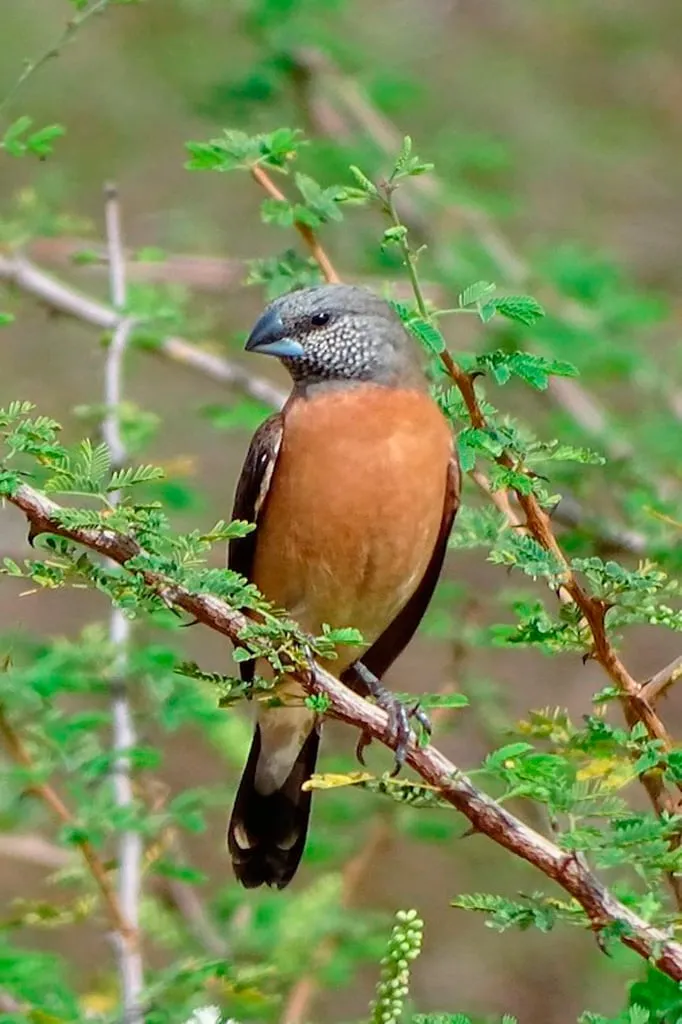
The Black-faced Sandgrouse (Pterocles decoratus), which is interesting to track in thorny bushes, merges with the savanna ground. The male Steel-blue Whydah (Vidua hypocherina), is an incredibly gorgeous bird. During the mating season, it grows a long tail, thus reaching a length of 31 centimeters (12.2 inches). There are also at least six other species of whydahs observed here, distinguished by their remarkably long tails. We can mention, for example, the Broad-tailed Paradise Whydah (Vidua obtusa). Measurements of its body with the tail often show full 36 centimeters (14.2 inches).
One of the most fascinating raptors found in Ruaha is Eleonora's Falcon (Falco eleonorae). This falcon is named after Eleonora d'Arborea, a notable European ruler from the 14th century who was renowned for her exceptional humanism during her time, including the enactment of a law protecting birds of prey on the island of Sardinia. Eleonora's Falcon breeds in the Mediterranean region and flies primarily to Madagascar and neighboring islands for the winter. During their journey, these falcons make a stopover in Tanzania, specifically in the arid southern regions.
The migratory routes of these falcons were a subject of debate for many years, starting from the 1950s. However, considerable progress has been made in understanding the flight paths of Eleonora's Falcons, including distinctions between the routes taken by males and females, young and adult individuals. Nonetheless, it remains captivating to witness European birds embarking on a remarkable journey to Madagascar for the winter and finding respite in the arid landscapes of southern Tanzania.
Mtera Reservoir
Northeast of Ruaha National Park is a vast reservoir covering up to 660 square kilometers (254,8 sq miles). It was created in 1975 by damming the Ruaha River. Many dead trees are left at the bottom of the reservoir, some estimate over one million. These places attract large numbers of waterfowl who find it convenient to nest in the dead trees.
Among the birds nesting in the reservoir are Great Cormorants (Phalacrocorax carbo), which are traditionally seen sitting in the sun and spreading their wings to dry, and African Darters (Anhinga rufa) also known as Snakebirds. These darters, just like cormorants, have no oil to protect their feathers from getting wet, so you can also see them sitting by the water and drying their wings in the wind.
Among the waterfowl at Mtera, the Grey Heron (Ardea cinerea) stands out as an insatiable predator, devouring any creatures it can capture. They entice their prey out of the water employing various tactics: casting shadows extending their immense wingspan to attract victims, disturbing the water near the shoreline, swiftly moving their legs, and at times pilfering prey from other avian species. On the other hand, herons often become targets themselves for other raptors, for example, African Fish-eagles (Haliaeetus vocifer). These formidable eagles pose a threat to an extensive range of aquatic creatures, smaller birds, reptiles, and some mammals. African Fish-eagles have been documented attacking turtles, monitor lizards, and even small crocodiles, as well as hares, monkeys, and dik-dik antelopes.
The reservoir is home to hundreds of thousands of Barn Swallows (Hirundo rustica). African Spoonbills (Platalea alba) with their stunning long spatula-shaped beaks can also be seen here as they move from side to side in the water, catching mollusks, crustaceans, insects, larvae, and small fish.
There is a large wetland near the reservoir that is also worth looking into to find the White-faced Whistling Duck (Dendrocygna viduata) and Fulvous Whistling Duck (Dendrocygna bicolor). They are called so because they produce a whistling sound. These ducks can nest both on the ground and in trees.
African Jacanas (Actophilornis africanus) are frequently spotted in this region, sporting their remarkably large feet and nails. These impressive features aid jacanas in maneuvering skillfully on the surface of aquatic plants. The chestnut hue of their plumage makes them highly conspicuous amidst the water. Another bird attracted by the water is the Spur-winged Goose (Plectropterus gambensis). Notably, these geese possess a unique trait of being poisonous, as consumption of their meat, when cooked, can prove fatal to humans. This deadly characteristic is attributed to their diet, which includes blister beetles whose outer shells contain the organic toxin known as cantharidin.
Common species in these waters are Knob-billed Ducks (Sarkidiornis melanotos), Red-billed Teals (Anas erythrorhyncha), and African Pygmy Geese (Nettapus auritus) with metallic green backs. The latter birds are primarily interested in water lily seeds. These plants are considered a good indication of where to look for pygmy geese.
Usangu Flats
To the south of Ruaha National Park lies a floodplain, characterized by periodic flooding in numerous locations, alongside several permanent wetlands and rice paddies. This abundance of water serves as a magnet for a diverse array of avian species, contributing to its recognition as an important bird area. Within this region, one can find clusters of acacia trees, miombo forests, and even baobabs. However, many open impoverished grassland pastures are also present.
This area boasts an impressive catalog of over 400 bird species. Particularly, waterfowl species are drawn to the rice plantations. Notable examples include the Fulvous Whistling Duck (Dendrocygna bicolor), the endangered Grey Crowned Crane (Balearica regulorum), and the Spur-winged Goose (Plectropterus gambensis).
On these plains you can find the White-crowned Lapwing (Vanellus albiceps), Caspian Plover (Charadrius asiaticus), Black-winged Stilt (Himantopus himantopus), Glossy Ibis (Plegadis falcinellus), African Openbill (Anastomus lamelligerus), Yellow-billed Stork (Mycteria ibis), Rufous-bellied Heron (Ardeola rufiventris), Squacco Heron (Ardeola ralloides) who is a prominent night hunter, Little Egret (Egretta garzetta) as well as other inhabitants of lowland meadows and wetlands

The Usangu Plains is the sole known habitat in East Africa for a sizable colony of Black-winged Pratincoles (Glareola nordmanni). Originating from the steppes of Eastern Europe, Kazakhstan, and Russia, they migrate to Africa during the winter season. Unfortunately, their population has been declining, and they are currently classified as close to vulnerable. The Wattled Crane (Grus carunculata), which frequents the rice fields, also faces a vulnerable status. Additionally, the Great Snipe (Gallinago media), renowned for its remarkable non-stop migrations over vast distances, chooses these plains as its wintering grounds after journeying from Northern Europe.
Usangu is believed to be the only place in Tanzania where four species of Coucal live: the Coppery-tailed (Centropus cupreicaudus), Black (Centropus grillii), Senegal (Centropus senegalensis) and White-browed (Centropus superciliosus). The latter is known for coming out to hunt during grass fires, catching insects escaping the fire.

At least two species endemic to Tanzania are found here: the Ashy Starling (Lamprotornis unicolor) and Yellow-collared Lovebird (Agapornis personatus).
Denham's Bustard (Neotis denhami) can fly here from the neighboring Kitulo plateau. It was noticed that they are attracted to scorched pastures. These bustards hunt snakes, rodents, insects, from time to time eating the chicks of other birds, as well as plants. Sometimes they follow ungulates, interested in the droppings they leave behind. The fact is that Denham's Bustards like to eat dung beetles.
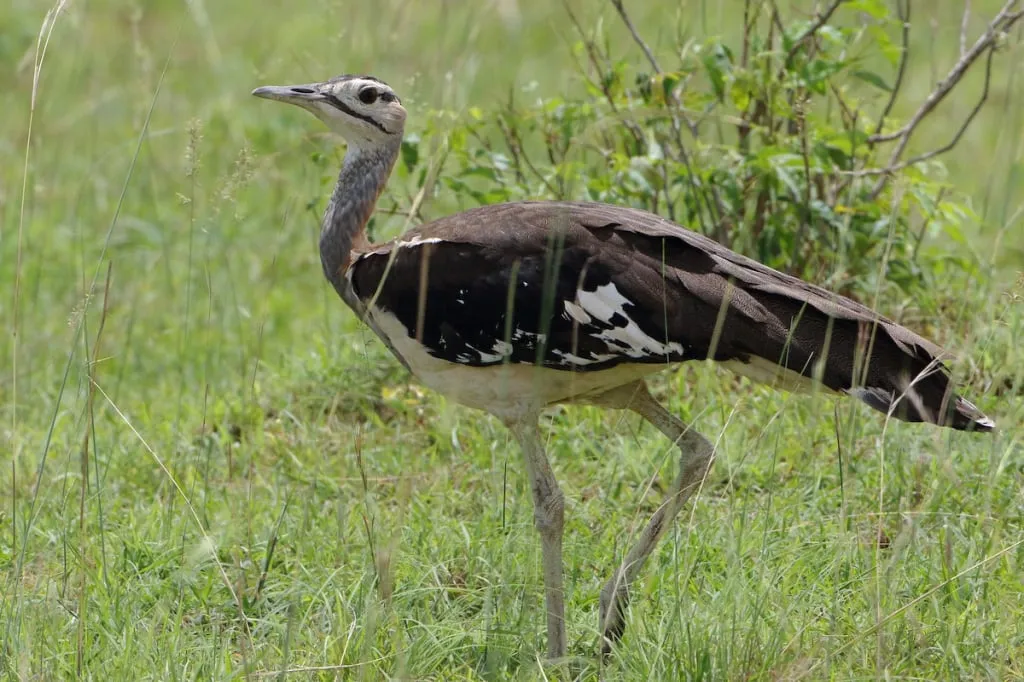
Kitulo Plateau
The Kitulo Plateau, situated in the southern region of Tanzania, occupies altitudes ranging from 1,800 to 2,961 meters (5,905 to 9,715 feet) above sea level. Predominantly composed of mountain meadows, the plateau boasts a vast array of vibrant colors. In 2005, a national park bearing the same name was established, becoming the first tropical African park dedicated to the preservation of plant life. Notably, the park is renowned for its impressive collection of 45 orchid species, boasting a grand total of 350 flowering plant species.
Comprising three forest reserves and a dairy farm, the plateau's precise bird species count remains unknown and warrants further study. Regrettably, the national park located on the plateau receives relatively few visitors due to the scarcity of large animals within its boundaries. However, birdwatchers should not overlook this area, as it holds its own allure.
Among the avian inhabitants of the plateau is the Denham's Bustard (Neotis denhami), a rare savanna bird. During the winter months, the Pale or Pallid Harrier (Circus macrourus) and Lesser Kestrel (Falco naumanni) seek refuge in this region. Additionally, the Rufous-naped Lark (Mirafra africana) calls Kitulo its home. This bird is known for its remarkable tolerance of close observers.
Also spotted on the plateau are the Short-tailed Pipit (Anthus brachyurus), Shelley's Francolin (Scleroptila shelleyi), and the Common Quail (Coturnix coturnix).
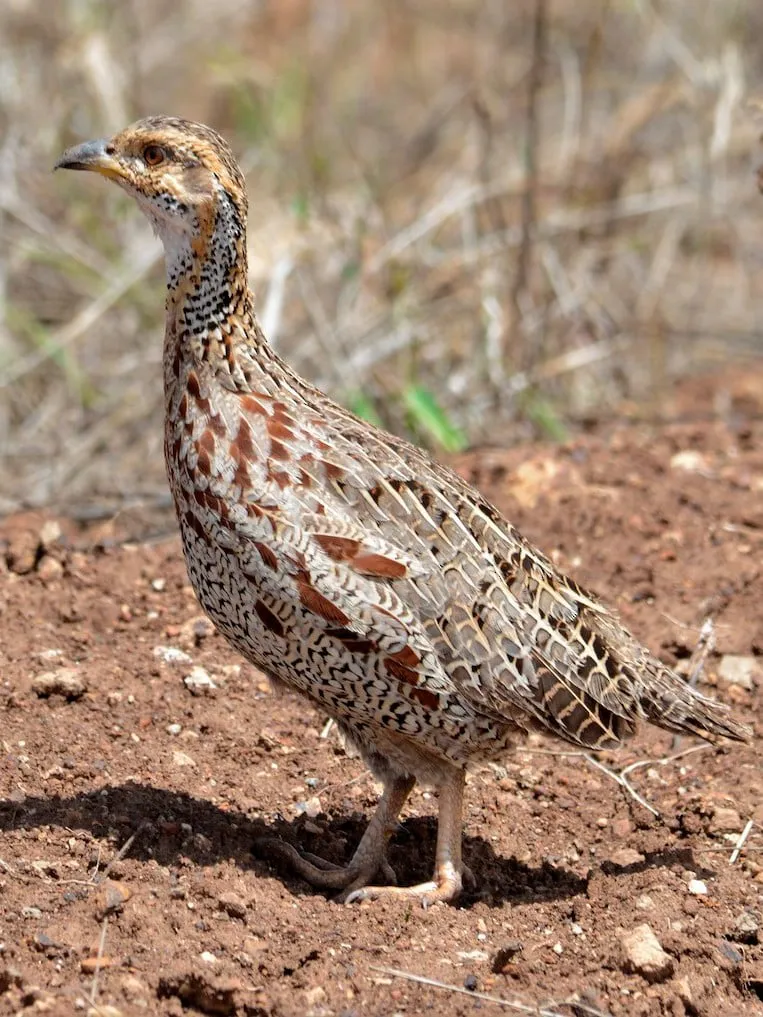
The plateau is home to the Angola Swallow (Hirundo angolensis), a beautiful bird with blue steel-colored feathers. Two noteworthy large raptors in this area are the Augur Buzzard (Buteo augur) and the Lanner Falcon (Falco biarmicus). The Augur Buzzard hunts rats and lizards, while the Lanner Falcon catches other birds in mid-flight.
ЕOther interesting species here include the Churring Cisticola (Cisticola njombe), Montane Widowbird (Euplectes psammacromius), and Kipengere Seedeater, also known as Tanzania Seedeater (Crithagra melanochroa), which is considered endemic to the country.
Mount Rungwe
In close proximity to the Kitulo Plateau, Mount Rungwe emerges, adorned with tropical forests. This dormant volcano reaches a height of nearly 3,000 meters (9,840 feet). Benefiting from abundant rainfall, with an annual average of up to 3 meters (9.8 feet), the southeastern slopes of this mountain complex represent the wettest region in all of Tanzania. The encompassing important bird area comprises three significant forest areas alongside several smaller forest reserves.
On the slopes of Rungwe, several intriguing bird species find their habitat, including the Dusky Turtle Dove (Streptopelia lugens), Montane Nightjar (Caprimulgus poliocephalus), Mountain Buzzard (Buteo oreophilus), Moustached Tinkerbird (Pogoniulus leucomystax), and Bar-tailed Trogon (Apaloderma vittatum).
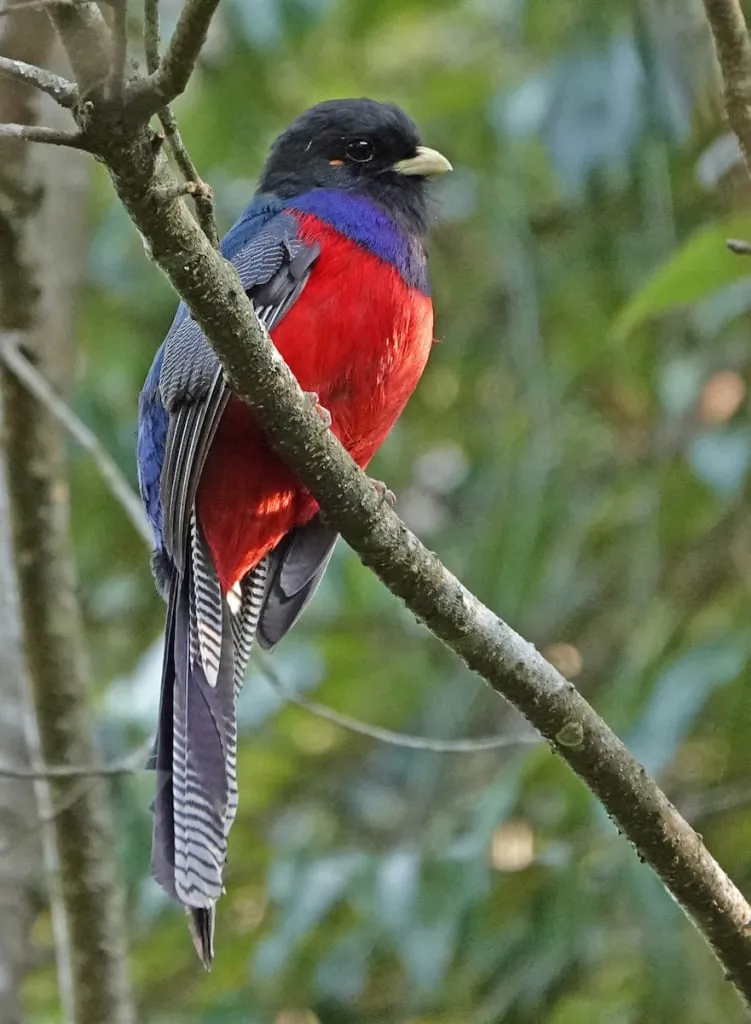
In the montane forests of Rungwe you can find a large number of birds, including the Chapin's Apalis (Apalis chapini) and Mountain Yellow-Warbler (Iduna similis). This warbler, as its name suggests, thrives in subtropical and tropical montane forests, and prefers to eat insects, especially flies
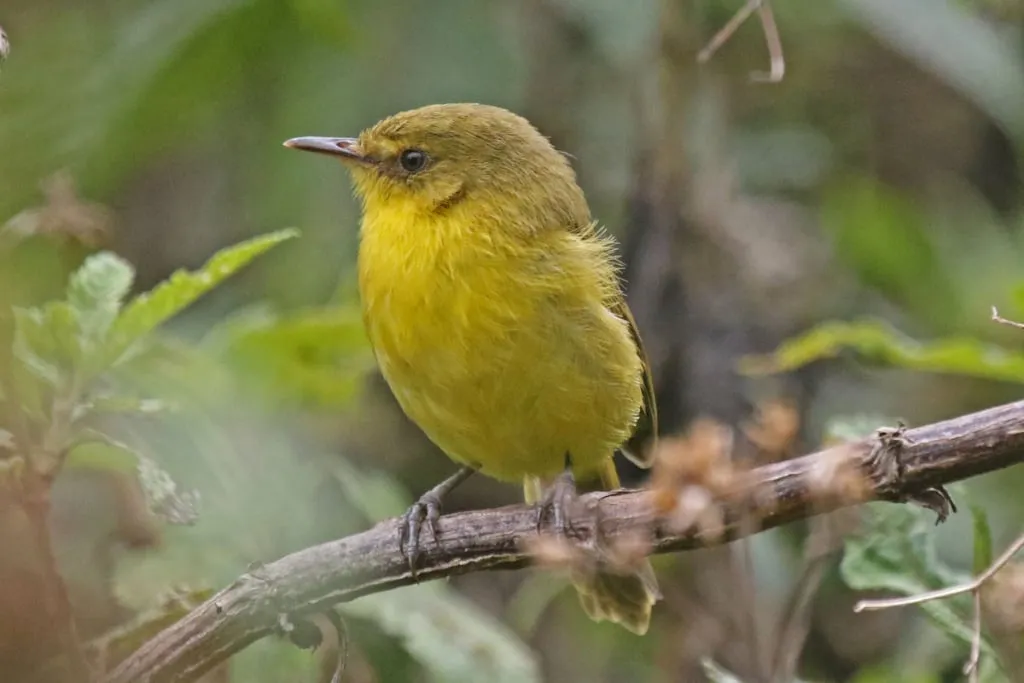
The Slender-billed Starling (Onychognathus tenuirostris) attracts attention with its elegant pointed tail and the striking blue-black plumage of the males, which shines brilliantly in the sunlight. Another resident of the area is the Kenrick's Starling (Poeoptera kenricki). While its primary habitat lies in central Tanzania, it can also be found in various locations in Kenya.


These territories are also home to several notable bird species, including the Orange Ground Thrush (Geokichla gurneyi), Montane Widowbird (Euplectes psammacromius), Baglafecht Weaver (Ploceus baglafecht), Red-faced Crimsonwing (Cryptospiza reichenovii), and Oriole Finch (Linurgus olivaceus). These species are typically found in forested areas. Among the remarkable inhabitants of Rungwe are the Forest Double-collared Sunbird (Cinnyris fuelleborni) and the Bronze Sunbird (Nectarinia kilimensis). These sunbirds derive nourishment from flower nectar, insects, and spiders. It is worth noting that sunbirds are often compared to South American hummingbirds and Australian honeyeaters as the African equivalent.
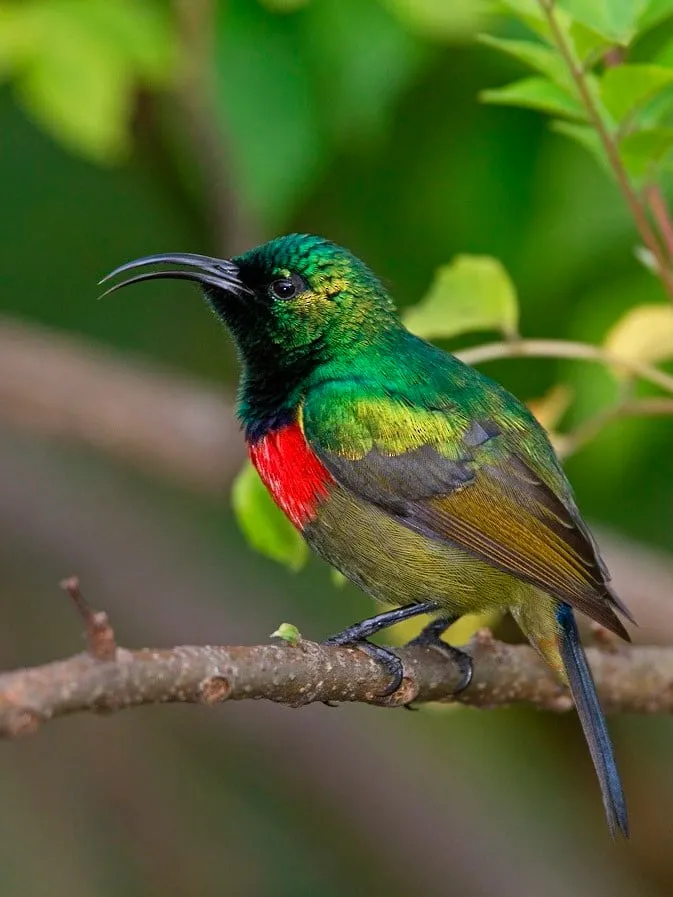

Umalila Mountains
To the west and south of the dormant Rungwe volcano lie several forest reserves. Unfortunately, these reserves have been significantly affected by extensive land cultivation. Nevertheless, the region remains a haven for numerous bird species, although the full extent of species diversity is yet to be fully explored.
This area is characterized by steep hills covered with fragmented patches of forest. Among the inhabitants are the Olive-flanked Ground Robin (Cossypha anomala) and the African Hill Babbler (Sylvia abyssinica); the presence of the latter is often discernible by its melodious trills amidst the lush vegetation. The local forests provide a home for the Shelley's Greenbul (Arizelocichla masukuensis) and the Orange Ground Thrush (Geokichla gurneyi). It is noteworthy that the Olive Thrush (Turdus olivaceus) has been observed in the Umalila forests, despite its typical habitat being considered more common in southern Africa. A fascinating aspect of the Olive Ground Thrush is its ability to mimic the songs of other birds.
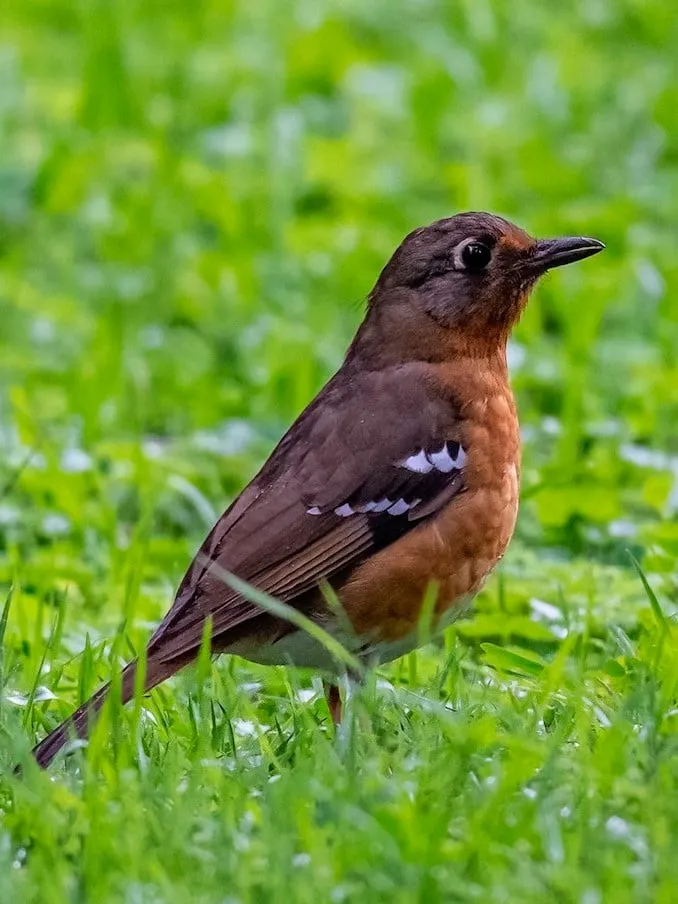
Notable sightings in the Umalila Mountains include relatively rare bird species in terms of their population size within Tanzania. Reports of such observations are especially valuable. Among such findings are the Southern Brown-throated Weaver (Ploceus xanthopterus) and the Brown Firefinch (Lagonosticta nitidula). Both of these avian creatures possess captivating beauty and are deserving additions to the photo collection of any avid birdwatcher.
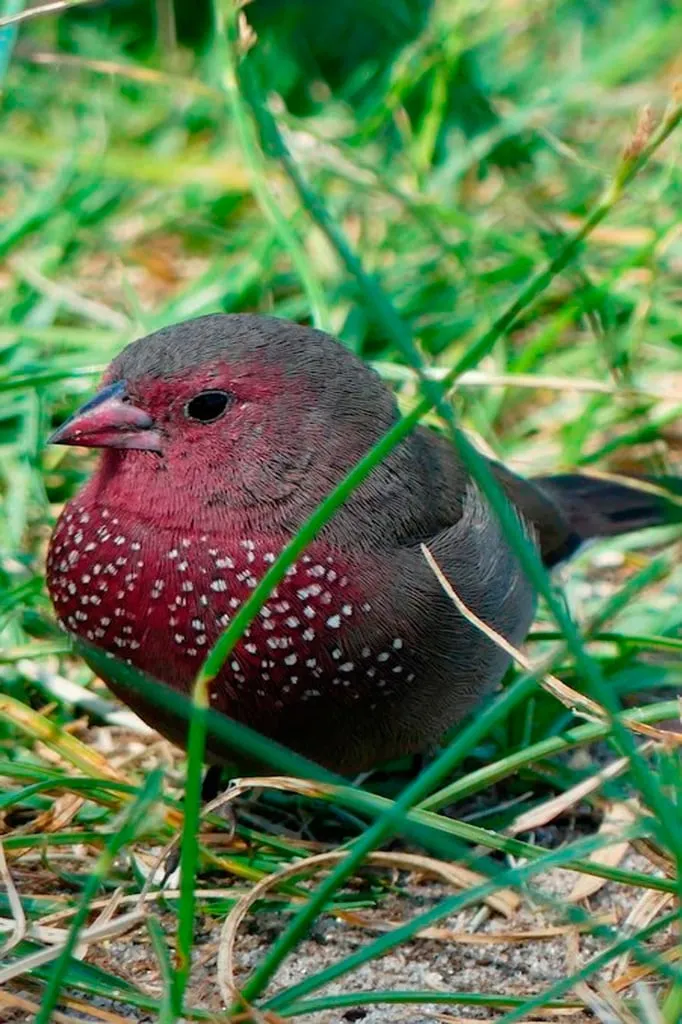
Within this area, sightings of the Green Barbet (Stactolaema olivacea) have been recorded. These sociable birds can be encountered in flocks of up to eight individuals, offering the opportunity to observe their communal behavior. Near streams in the highlands, one may come across the Bertram's Weaver (Ploceus bertrandi). As for the Black Sawwings (Psalidoprocne pristoptera), they tend to congregate near water bodies, often in pairs or even larger groups. These birds are generally quiet and frequently fly directly above the tree canopy, making it a challenging task to observe them closely or capture a good photograph.
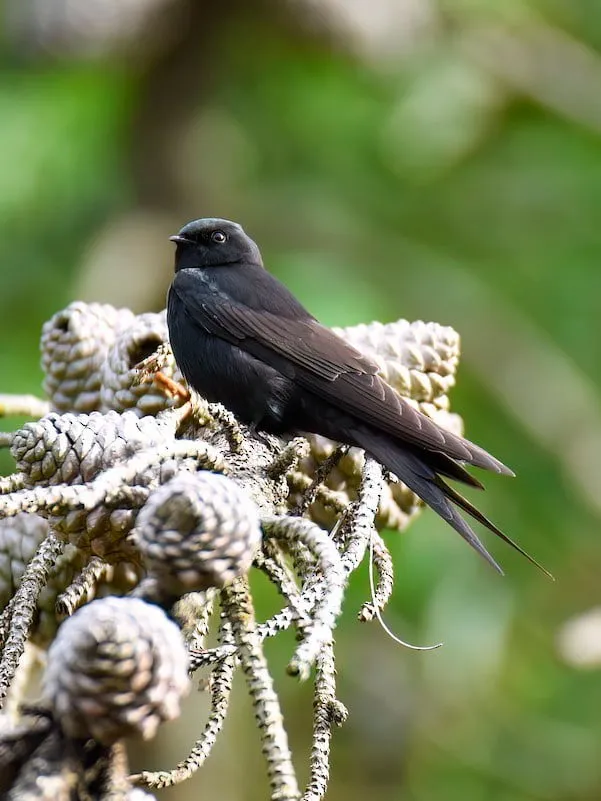

During the cold season in southern Africa, with some luck you can encounter the Pearl-breasted Swallow (Hirundo dimidiata). These swallows migrate from the southern parts of the continent to reach the Umalila Mountains, which marks the northernmost extent of their habitat.
If one directs their gaze eastward from the Umalila Mountains, they will discover the Udzungwa Mountain System, renowned for its unique endemic wildlife and plant species. This article explores the local avian residents of Udzungwa, as well as those found in the Selous. Venturing westward from Ruaha and the Usangu Plains, equally captivating destinations await, including Lake Rukwa and Katavi National Park, which come highly recommended for birding enthusiasts. For a comprehensive compilation of Tanzania's top birdwatching locations, we invite curious birders to explore our guide titled "Tanzania: Top 10 Locations for Birdwatching".











